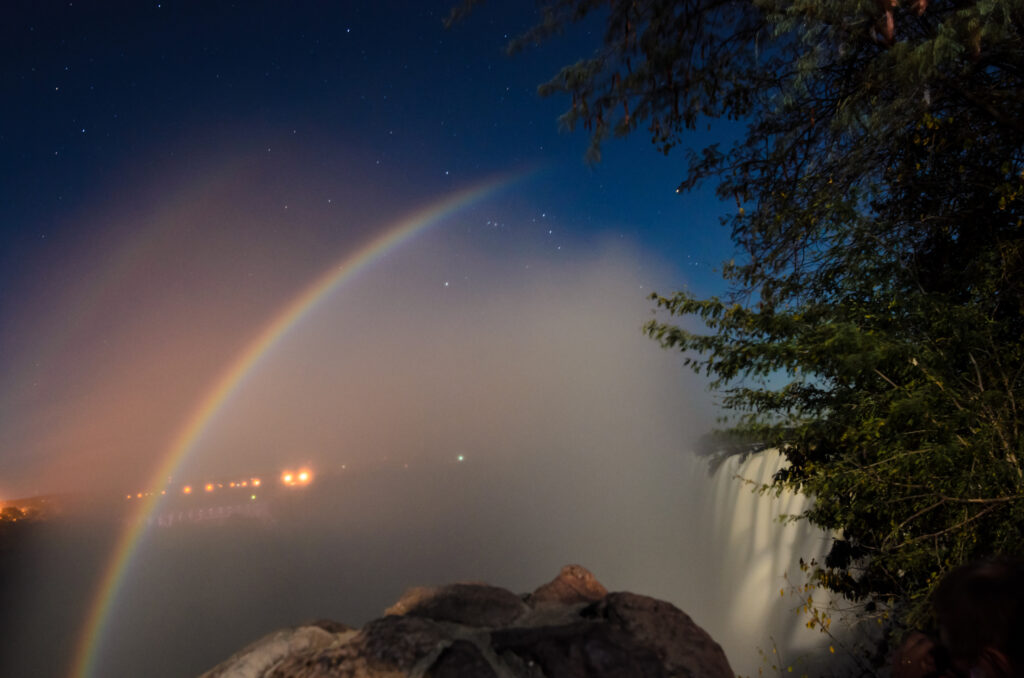Lunar wonder A moonbow – or lunar rainbow – is a rainbow created by moonlight. Incredibly rare, the only places in the world where they’re consistently seen are Victoria Falls, along the Zambia-Zimbabwe border, and Cumberland Falls near Corbin, Kentucky. –theearthsite.greatergood.com
You read it first in this week’s The Factory in Guide magazine.
Rainbows are beautiful and intense just after a heavy rain shower. Sometimes there is what looks like a double rainbow, those are really cool. But have you ever seen a moonbow? A rainbow that happens when light from the Moon is refracted through water droplets in the air? They are very rare and hard to see, and even harder to get a good picture of, I am sure. But they do happen.
Victoria Falls, located on the borders of Zimbabwe and Zambia, Africa; Iguazu Falls on the borders of Argentina and Brazil; Yosemite National Park, California, and also Cumberland Falls near Corbin, Kentucky, United States, are a few places where moonbows are seen the most.
Niagara Falls, which borders the United States and Canada, was a place to frequently see lunar rainbows in the early 1800s, but because the falls were illuminated during the night starting in the 1860s, they are hardly ever seen there now because it’s just too bright.
Heavy spray mists from these powerful waterfalls makes it much more likely to see rainbows during the day. A curtain of rain or mist just opposite from the Sun on a bright sunny day is a great start. However, both rainbows and moonbows need almost perfectly spherical raindrops – distortions of only 1 percent are sufficient to prevent a bow’s appearance.
Also, the light source must be at the right altitude. Rainbows and moonbows are centered directly opposite the Sun or Moon. The higher the altitude of the light source, the lower the bow’s arc. So, the Sun or Moon must be low enough that their bows form above the horizon so we can see them.
The best time to see a moonbow is when the Moon is in its full stage, which is only about three days out of the month, and that’s if the clouds and weather are cooperating. Obviously, the darker the sky the better the fainter moonbow can be seen, so timing is critical for observing this phenomena, ultimately closer to the end of twilight each evening. When the Moon rises too high, the moonbow will not be seen as it falls below the horizon.
In middle latitudes, the Full Moon is best placed for moonbows in summer, when it spends more time low in the sky. In other seasons, the window of opportunity for catching a moonbow may last only an hour.

This reminds me of, “Like the appearance of a rainbow in a cloud on a rainy day, so was the appearance of the brightness all around it. This was the appearance of the likeness of the glory of the LORD.” Ezek 1:28 NKJV
Scripture taken from the New King James Version, Copyright 1982 by Thomas Nelson. Used by permission. All rights reserved.
Learn More About This Fact
For more interesting facts, click on the buttons below!






